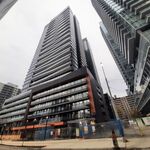And the service level could be increased? Theres nothing inherent that says the bus can't run at a reasonable frequency.
While true, there is nothing in the entire history of TTC run parallel bus services that shows that this would be something we can reasonably expect. So I am arguing by real world parameters, and not pie in the sky fantasies.
The most frequent of these is the 85, which runs every 16 minutes. This in itself is not an attractive frequency, and would certainly not incentive me to ditch the car.
It is also highly questionable whether it's the best use of funds in this era of inflation and purse stright tightening, to have a parallel bus service when those drivers could be delivering more valuable service elsewhere, all because we don't want local transit to behave like it's local transit.
1) Take the bus
2) Walk with your bags (which may or may not be practical)
3) And there are more options to!
Yes, like driving, or taxi. Not what transit advocates want to promote more of, but if we're catering to selfish people who are well served by the current stop spacing, that's exactly what you will get.
(which with bags is not a common trip for most people),
You're right. Let's cancel the UP Express, then, as it's money being wasted on uncommon trip types. The only people we should be catering to are people going to work.
Not sure where I said anything was "enough".
In all your posts where you said that the Yonge corridor adequately serves the people who live along it?
evermind people who want to get to work on time)
Sorry, I do not find this to be at all impressive or valid. People who want to shave a couple of minutes off their train ride so they can get to work, the consequence of which would be that the people living in between stops have to walk 10, 20, 30 minutes extra just to get to the station, sounds like tyranny of the majority.
Do the people who have to walk 10-30 minutes extra not need to get to work on time? Under this proposed scheme, they'd have to get up probably an hour earlier than they would if they had a transit stop in a reasonable distance!
again theres a reason why certain standards have been settled on globally.
Hmm, and which global standards are those? It would seem to me that different towns have different standards that are dependent on their history, architecture types, and density.
Transit in New York is different to transit in Toronto is different to transit in London is different to transit in Marseille is different to transit in Moscow is different to transit in Beijing is different to transit in Sydney.
"Those that fail to learn from history are doomed to repeat it."
Yeah, I sure would hate it if it the mistake of giving more people access to transit was repeated again!





